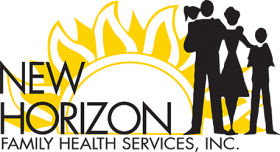
Many of us disregard the importance of regular checkups. Some of us avoid doctor visits out of fear and others simply because it’s not part of our routine. When your loved one puts off seeing the doctor, a small health problem can become a more serious one. And some of the most serious health issues don’t always have obvious symptoms.
You may be the one person who can convince your loved one to go to the doctor. Give it a try. Often just by asking some basic questions about diet and lifestyle and running some quick tests, a doctor can assess someone’s health and well-being. The doctor may be able to suggest behaviors or treatments to dramatically lower the risk of serious health problems.
It’s important for people of all ages to see a doctor regularly. People age 50 and over should see a doctor at least once a year. Yet they are often the most resistant to seeing a doctor out of fear of the unknown. But by encouraging a loved one to go, the benefits include:
• Help your loved one learn what he or she needs to do to get and stay healthy.
• Reassure the whole family about your loved one’s health.
• Use this as a reminder to see the doctor yourself.
• You might save a loved one’s life!
Prep before you go
Preparing a little in advance will help your loved one get a lot more out of the doctor visit. Here are some suggestions of information to gather before you go see the doctor.
- Questions for the doctor: Help your loved one take control of his or her health by making sure the doctor addresses all of your questions thoroughly. The best way to do this? Write the questions down in advance. See our sample list of questions below.
- Bring all medications your loved one is taking to the doctor during the visit. By bringing in the bottles, you won’t have to wonder if you remembered everything, and the doctor can see the dose and frequency of each drug.
- Bring some health history information. Write down diseases, surgeries, family history of cancer, diabetes, heart disease, etc.




 rs continue to contribute billions of dollars annually to our country’s fruit and vegetable industry, health centers provide the support they need in order to access health care and overcome many of the health vulnerabilities working in the fields entails.
rs continue to contribute billions of dollars annually to our country’s fruit and vegetable industry, health centers provide the support they need in order to access health care and overcome many of the health vulnerabilities working in the fields entails. 

 On 28 July World Hepatitis Day (WHD) brings the world together to raise awareness of the global burden of viral hepatitis and to influence real change in disease prevention and access to testing, treatment and care. One of just four disease-specific global awareness days officially endorsed by the World Health Organization (WHO), WHD unites patient organisations, governments and the general public to boost the global profile of viral hepatitis.
On 28 July World Hepatitis Day (WHD) brings the world together to raise awareness of the global burden of viral hepatitis and to influence real change in disease prevention and access to testing, treatment and care. One of just four disease-specific global awareness days officially endorsed by the World Health Organization (WHO), WHD unites patient organisations, governments and the general public to boost the global profile of viral hepatitis.